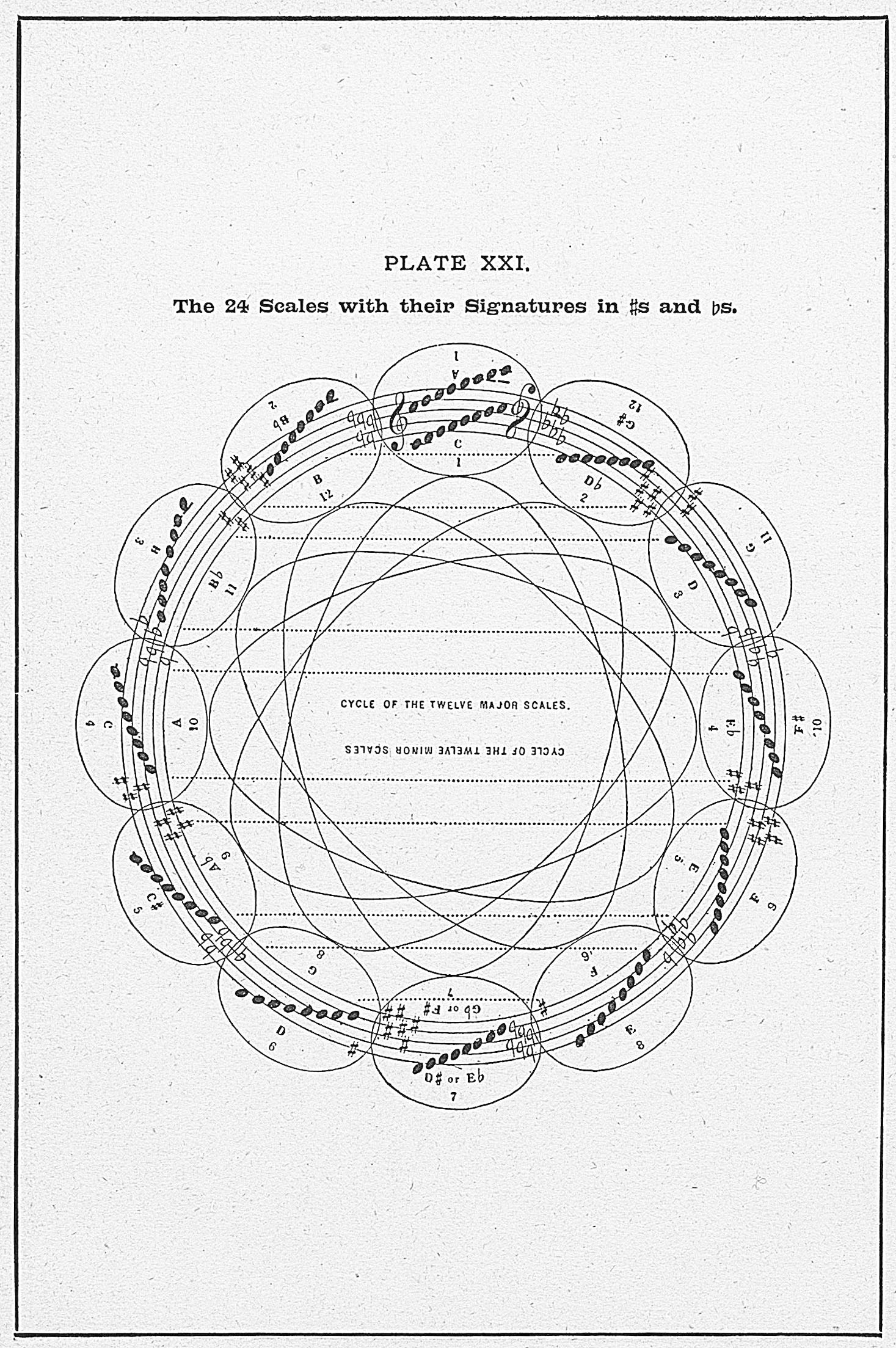
The scales in this plate advance by semitones, not in their normal way by fifths; but their normal progress by fifths is shown by the spiral-ellipse line winding round under the stave and touching the ellipses containing the scales by semitonic advance; the scales being read to the right for the majors inside, and to the right for the minors outside. In each of the modes the scales are written in ?s and #s, as is usual in signatures; and since the scales [Scientific Basis and Build of Music, page 116]
These two plates show the chromatic chord resolving into the twelve major and twelve minor tonic chords of the twenty-four scales. There seems to be twenty-five, but that arises from making G? and F# in the major two scales, whereas they are really only one; and the same in the minor series, E? and D# are really one scale. C in the major and A in the minor, which occur in the middle of the series, when both sharps and flats are employed in the signatures, are placed below and outside of the circular stave to give them prominence as the types of the scale; and the first chromatic chord is seen with them in its major and minor form, and its typical manner of resolving - the major form rising to the root, and falling to the top and middle; the minor form falling to the top, and rising to the root and middle. The signatures of the keys are given under the stave. [Scientific Basis and Build of Music, page 116]
advance by semitones, the keys with ?s and #s alternate in both modes. The open between G# and A? in the major, and between D# and E? in the minor, is closed in each mode, and the scale made one. The dotted lines across the plate lead from major to relative minor; and the solid spiral line starting from C, and winding left and right, touches the consecutive keys as they advance normally, because genetically, by fifths. The relative major and minor are in one ellipse at C and A; and in the ellipse right opposite this the relative to F# is D#, and that of G? and E?, all in the same ellipse, and by one set of notes, but read, of course, both ways. [Scientific Basis and Build of Music, page 117]
